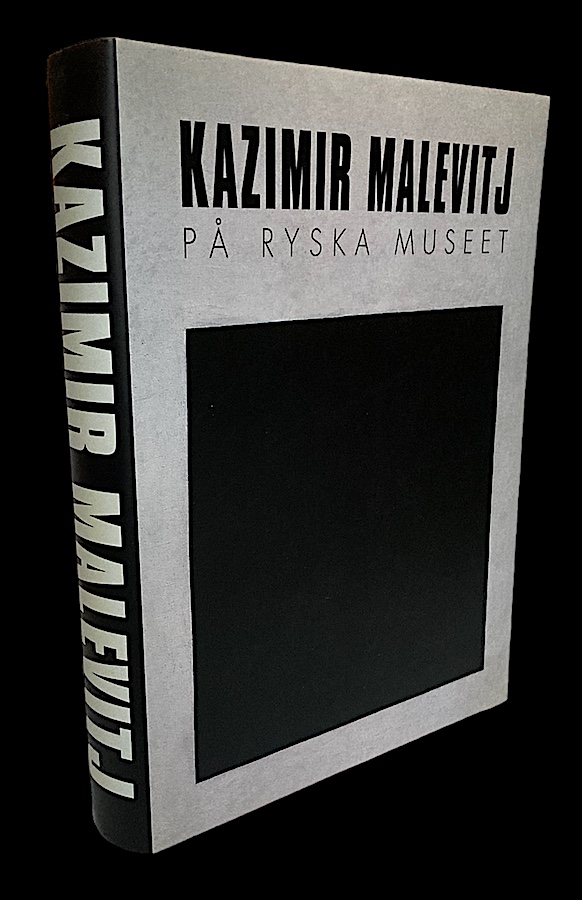Beskrivning
Millesgården in collaboration with Palace Edition. 1999. 450 pp. Large 4to (32.5 x 26 cm). Blind tooled cloth binding with well-preserved dust jacket. Richly illustrated, preferably in colour. Detailed catalogue of paintings, drawings, watercolours, posters, postcards, graphic works, architectons and porcelain. Three fold-out panels. Impressive catalogue, a mammoth monograph of the Russian artist. With list of works. Book design by Joseph Kiblitsky. Catalogue for an exhibition at the Russian Museum in St. Petersburg and Millesgården, Stockholm. Text in Swedish. Great condition!
Kazimir Severinovich Malevich 1879–1935) was a Russian avant-garde artist and art theorist, whose pioneering work and writing influenced the development of abstract art in the 20th century. He was born in Kiev, to an ethnic Polish family. His concept of Suprematism sought to develop a form of expression that moved as far as possible from the world of natural forms (objectivity) and subject matter in order to access ”the supremacy of pure feeling” and spirituality. Malevich is also sometimes considered to be part of the Ukrainian avant-garde (together with Alexander Archipenko, Sonia Delaunay, Aleksandra Ekster and David Burliuk) that was shaped by Ukrainian-born artists who worked first in Ukraine and later over a geographical span between Europe and America.
Early on, Malevich worked in a variety of styles, quickly assimilating the movements of Impressionism, Symbolism and Fauvism and, after visiting Paris in 1912, Cubism. Gradually simplifying his style, he developed an approach with key works consisting of pure geometric forms and their relationships to one another, set against minimal grounds. His Black Square (1915), a black square on white, represented the most radically abstract painting known to have been created so far and drew ”an uncrossable line (…) between old art and new art”; Suprematist Composition: White on White (1918), a barely differentiated off-white square superimposed on an off-white ground, would take his ideal of pure abstraction to its logical conclusion. In addition to his paintings, Malevich laid down his theories in writing, such as ”From Cubism and Futurism to Suprematism” (1915) and The Non-Objective World: The Manifesto of Suprematism (1926).


Recensioner
Det finns inga produktrecensioner än.